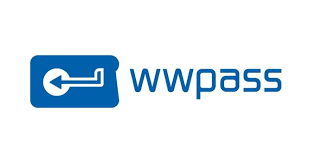
The Importance of Multi Factor Authentication in Today’s Digital World
In the era of digital transformation, securing sensitive data has become paramount. One robust solution to enhance security is multi factor authentication. This method significantly reduces the risk of unauthorized access to user accounts and sensitive information.
What is Multi Factor Authentication?
Multi Factor Authentication (MFA) is a security process that requires users to provide two or more verification factors to gain access to a resource, such as an application, online account, or a VPN. This layered security approach ensures that even if one factor is compromised, unauthorized access is still prevented.
The Three Main Types of Authentication Factors
MFA relies on three main types of authentication factors:
- Something You Know: This usually refers to a password or PIN. It is the most common form of authentication and requires users to provide a secret that only they know.
- Something You Have: This factor involves something physical that the user possesses, such as a mobile device or a hardware token. For instance, receiving a verification code via SMS or through an authenticator app is a common method.
- Something You Are: This refers to biometrics, such as fingerprints, facial recognition, or retinal scans. These factors are unique to individuals and provide a strong layer of security.
Why is Multi Factor Authentication Important?
With the ever-increasing threat of cyberattacks, MFA plays a crucial role in safeguarding personal information. Here are several reasons why implementing multi factor authentication is essential:
1. Enhanced Security
The primary advantage of MFA is the enhanced security it provides. By requiring multiple forms of verification, the chance of unauthorized access is significantly reduced. Cybercriminals may obtain a user’s password, but they will struggle to gain access without the additional factors.
2. Protection Against Phishing Attacks
Phishing attacks have become more sophisticated, targeting users to extract sensitive information. With MFA, even if credentials are compromised through phishing schemes, the additional factor (like a one-time code) will prevent access, mitigating the risk of data breaches.
3. Compliance with Regulations
Many industries are subject to regulations that require stringent security measures. Implementing MFA can help organizations comply with these regulations, such as GDPR, HIPAA, and PCI DSS, ensuring that customer information remains protected and secure.
4. Building Trust with Users
In a world full of data breaches and security scandals, users are more security-conscious than ever. Implementing MFA demonstrates to users that a company values their security, which builds trust and loyalty.
Implementing Multi Factor Authentication

While the benefits of MFA are clear, integrating it into existing systems can be daunting. Here are steps to consider for implementing MFA effectively:
1. Assess Your Needs
Determine the level of security required based on the sensitivity of the information being protected. Critical systems will naturally require stronger authentication processes compared to less sensitive platforms.
2. Choose the Right Authentication Factors
Select the appropriate combination of factors that align with your user base and security requirements. Consider user convenience and accessibility to ensure high adoption rates.
3. Employee Training and Awareness
Educating employees about the importance of MFA and how to navigate the verification process is crucial for a smooth transition. Provide training sessions and resources to help users understand the benefits and functionality of MFA.
4. Monitor and Refine
Once MFA is implemented, continuously monitor its effectiveness and user feedback. Be prepared to adapt the system as necessary to enhance security and user experience.
Challenges and Considerations in Multi Factor Authentication
While MFA offers significant benefits, it is not without challenges:
1. User Resistance
Some users may view MFA as an inconvenience, potentially leading to resistance in adopting the process. It’s crucial to communicate the importance of MFA clearly and emphasize its role in protecting their information.
2. Technical Issues
Technical difficulties, such as issues receiving SMS codes or compatibility problems with devices, can hinder the effectiveness of MFA. Organizations must be prepared to troubleshoot issues promptly.
3. Cost Considerations
Implementing an effective MFA system may require financial investment in software, hardware, or training. Organizations must weigh these costs against the potential losses from data breaches.
Conclusion
In a digital landscape fraught with security vulnerabilities, multi factor authentication is a necessary safeguard. By requiring multiple verification methods, MFA not only enhances security but also builds trust with users and helps organizations comply with regulations. While implementing MFA comes with its set of challenges, the long-term benefits far outweigh the drawbacks. Embracing MFA is an essential step in protecting sensitive information and ensuring a secure digital future.